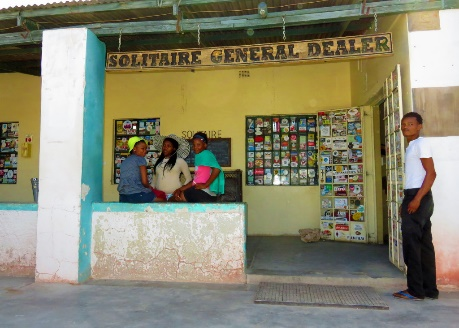A stretch of road Mad Max would feel at home on runs southwards through the gravel plains, small canyons and towering sand dunes of the Namib Desert, providing stops for awe, introspection and apple pie . . .
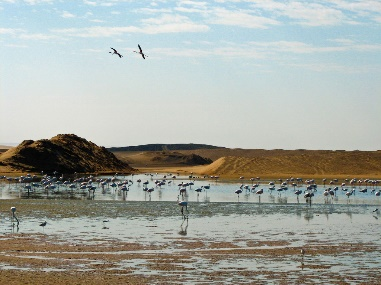
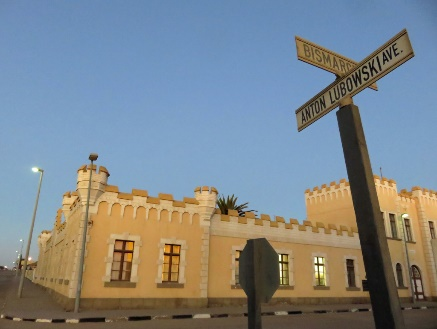
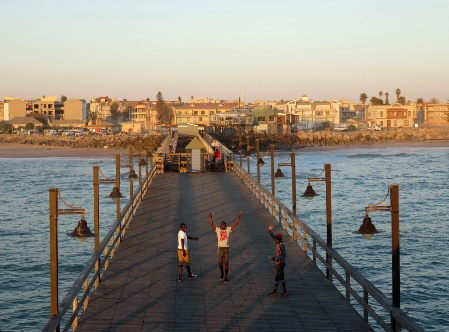
A whiff of adventure hangs enticingly in the air. My pulse quickens. Excitement builds. The ancient Namib Desert surrounds me in an expanse of tawny, earth colours, giving me a resolute nod, a firm handshake and a hefty (and dusty) pat on the back. I’m up for it. There is no choice but to slow down, lower my window and let the desert introduce itself kilometre by awe-inspiring kilometre. And, of course, pray that my old bakkie with the many clicks on its odometer performs appropriately to the occasion.
Seemingly a route of uncharted territory that would have been marked with ‘Here be dragons’ on old maps - or, perhaps skulls bleached over time in the intense heat and wind, the route is a relatively well-travelled Namibian route. But, as I’ve learnt through experience, this is no need to become blasé. When I’m alone on the vast barren gravel plains, with sand radiating out to the horizon in every direction and not a vehicle in sight, I am intensely grateful for that ten litres of water, supply of food, bedroll and extra spare tyre I’ve brought along.

The journey begins calmly in Swakopmund, the old German town that was dropped from the heavens to land between an inhospitable desert and an icy sea. Or, so it seems. History tends to disagree and claims that in the late 1800s a small contingent of stalwarts rowed ashore from their ship to make their home on the barren coast of the fledgling German colony. They built houses in the style of their homeland, constructed a jetty to unload goods in the thundering waves and constructed a railway into the interior. Today, Swakopmund has an unusual air, with traces of both Europe and Africa. It has become an activity centre and a tourist hub, with a host of curio- and coffee-shops and a choice of restaurants lining the wide streets to lure the weary traveller, who sighs with pleasure and relief to breathe in the cool, fresh sea air and to rest from the rigours of the road.
Refreshed, it’s time to hit the road again, Jack. And, ‘don’tcha come back no more, no more’. There’s no turning back now, the famed dunes of Sossusvlei are calling loudly. The 30km drive to Walvis Bay between curvaceous sand dunes and the glistening sea is a jaw-dropping, sensational piece-of-road supreme, which easily and always gets my ten-star rating. It’s also the last bit of tar and traffic before the gravel road leading towards the Namib-Naukluft Park and endless plains of nothingness.

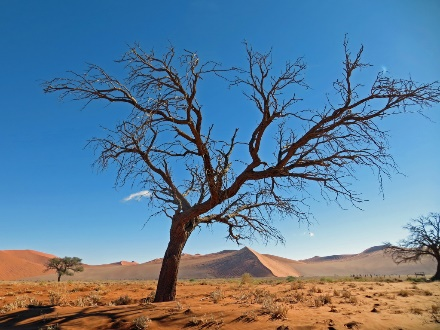
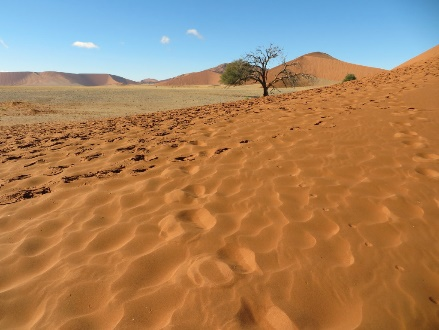

Driving into Walvis, I heed the good advice once casually offered by long-time resident, Neels Dreyer, who initiated the small and rustic Walvis Bay waterfront when his boat cruises needed a place to dock – and his passengers wanted a mug of hot coffee and a brötchen (bread roll) after their cruise. He wisely counselled that ‘must-do’s’ in the harbour town include a drive along the dune belt (which can also be traversed inland) and viewing the thousands of flamingos which colour the Walvis Bay lagoon in pink in the dry season. So, I trundle, in a comforting diesel rhythm, along the esplanade and the road to Paaltjies and the salt works, watching the antics of the abundant bird life before driving to the waterfront for coffee and charm. It’s a quick visit this time round and I have to leave the laid-back watering hole Sarah se Gat (named after a local fishing spot and a legendary fisherwoman) for a more leisurely visit some other time.
When it’s time to say cheers to the desert towns and civilisation and turn off Walvis’s main drag onto the C14, my heart does an involuntary jig. I tip my hat reverentially as I pass Dune 7, the highest around. The tar ends and the road becomes a wide channel in the sand. Eventually, even the radio splutters to a crackly silence. The desert swallows me up.

Its powerful presence washes over me. You gain perspective very quickly out here, when your importance in the grand scheme of things dwindles to humble survival.
After driving through endless gravel plains, which pulse with end-of-the-Earth vibes, two short passes - the Kuiseb and the Gaub - break the flatness as their wizened chasms culminate in drops down to the riverbed. Here, the ephemeral rivers rush down in flood after good summer rainfall in their catchment areas, carrying the trunks of massive trees along like buoyant matchsticks. Visitors that come in their wake, like me, are left wondering about the pile of wood resting peacefully in the dry riverbed.
The passes provide fine opportunities to step out of the vehicle, stretch my legs, breathe deeply, explore, take photos and imagine the river strutting its stuff. I am suitably impressed. The Kuiseb Canyon is also where geologist Henno Martin, author of The Sheltering Desert (a good desert read), hung out with his friend, Hermann Korn, to avoid internment during WWII.
After Gaub, I screech to a halt at the Tropic of Capricorn sign, a landmark on the long road, just in time to see fellow travellers clambering up it for photo opportunities. I join the happy snappers at this sign marking 23° South, the southernmost point on the sun’s annual pilgrimage. It is decorated with colourful stickers and names scrawled by many a passer-by.
The guys disappear in a cloud of dust and I continue in desert reverie until the popular and busy frontier stopover, Solitaire. Although it has blossomed madly over the years from its humble beginnings, Solitaire still holds ample appeal. It has a bevy of old motor vehicles in various stages of decay, an old-fashioned grocery store, a fuel station (with, importantly, a tyre-repair shop), a blackboard on the outer wall listing the annual rainfall, a restaurant and a bakery where huge doorstop slices of Moose McGregor’s famous apple pie are sold. Moose made his claim to fame when he moved into the solitaire of the desert and started making fresh bread and apple pie. Sadly, Moose passed away a few years back, but the pie lives on.


Now the landscape transforms as the vehicle hungrily eats up the last 80km to Sesriem, the gateway to one of Namibia’s top attractions – Sossusvlei, with its grand dunes and dry pan. Purple-hued mountains vie for celebrity status in this part of the world famous for its sand dunes.
Nearing Sesriem, dust billows from the sudden road traffic around the popular site, making visibility difficult. I switch on my headlights and reduce speed. The dust forms a layer of frosting on my skin and my hair, which stiffens into a wild halo. I don’t care. I have reached Desert Utopia where someone from a loftier plane must have had a blast sculpting the sensuous rows of gigantic sand dunes. The road through these sandy giants is mesmerising and I find myself smiling – widely.
It is just a foretaste. Dead Vlei is a step further into the magical and unfamiliar realm. The dead trees waltz around the cracked arena of the pan – frozen in time. I leave Big Daddy dune that stands sentry above the pan and the forever-dancing trees, continuing to nearby Sossusvlei, which is best seen from a height. Big Mama dune calls me for the climb and I trudge step by weary step up her sandy slopes. The wind whistles, trying to cover my tracks the moment they are made. Finally, I am in a world of handsome orange dunes high above the pan, the final resting place of the Tsauchab River, which is thwarted from its journey to the sea by the towering dunes. Here it curls into a snug ball and goes to sleep, filling the pan sometimes for a few months - a rare time of bird song and water ripples in the midst of the desert - before it slowly sinks into the sand. Hyena and jackal tracks remain etched into the hardened mud, reminding visitors of more abundant periods as does the row of Camelthorn trees that drink the underground water along the river course and are accentuated against the burnished sand.
The desert invites imagination, introspection and reflection. Sitting on the grand copper dune on top of the world, I ponder life, the universe and everything (thanks to Hitchhikers’ Guide to the Galaxy for that great line). I ruminate on the importance of water in the desert, the seasonal cycle of the river and the extraordinary and otherworldly beauty of the place. It’s as if this sandy corner of the Namib Desert received an extra heaped spoonful of beauty way back in time. Its profound presence makes it not just a highlight of a road trip, or something to tick off on some ‘been there, done that’ bucket list, but a place that makes a deeper impression in the recesses of one’s soul. There in that place where beauty accumulates, enriching us as human beings and urging us to be guardians of the planet. That’s where it settles.
All this desert energy is putting my frazzled brain into overdrive. I entertain my thoughts for a few more juicy seconds, then run down the dune shrieking like a carefree child. It’s time to meet my mates, erect my tent, get a delicious supper sizzling on the campfire and sit back in a comfortable chair under a heavenful of twinkling stars. The brightest in the universe.
